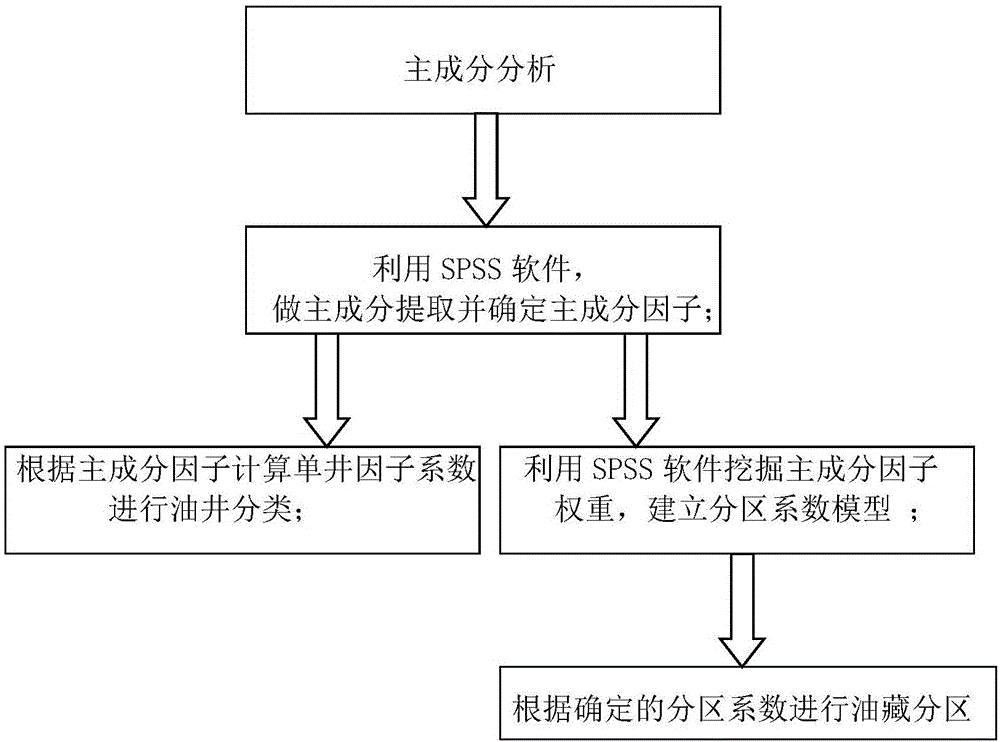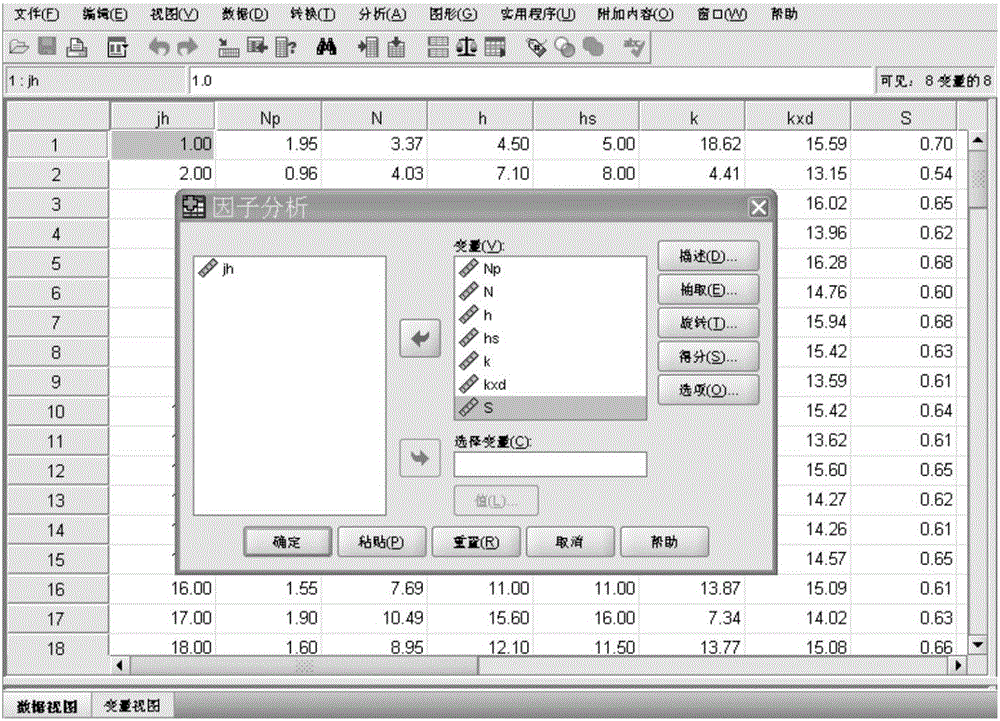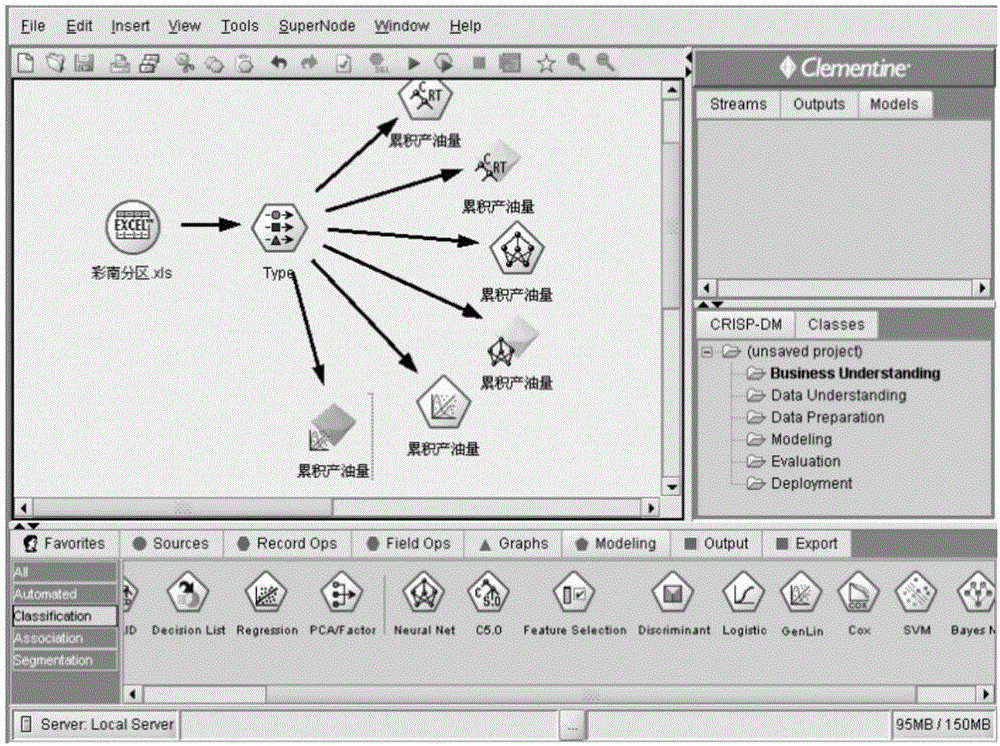Method of oil well classification and oil reservoir zoning based on SPSS(statistic package for social science)
A technology of oil reservoirs and oil wells, applied in the field of oil well classification and reservoir zoning based on SPSS, can solve the problems of lack of verification, time-consuming and laborious zoning rationality, etc., to improve work efficiency, save work time, and be operable strong effect
- Summary
- Abstract
- Description
- Claims
- Application Information
AI Technical Summary
Problems solved by technology
Method used
Image
Examples
Embodiment 1
[0056] An oil reservoir in Shinan: oil well classification
[0057]The data of normal production wells put into large-scale production in this reservoir are as follows:
[0058] Table 2-1 Basic parameters of normal production wells in reservoirs
[0059]
[0060] The results of SPSS principal factor analysis are shown in Table 2-2~2-4:
[0061] Table 2-2 Total Variance Table Explained
[0062]
[0063]
[0064] Table 2-3 Rotation component matrix (rotation method: Orthogonal rotation method with Kaiser normalization)
[0065]
[0066] Table 2-4 Principal component analysis result table
[0067] factor name Eigenvalues variance cumulative variance F1 thickness factor 3.687 46.033 46.033 F2 permeability factor 1.861 33.233 79.265
[0068] The analysis results show that there are two main components of factors affecting oil wells in this reservoir: thickness factor f1 and permeability factor f2. Obtained through the compone...
Embodiment 2
[0082] A Oil Reservoir in Shinan: Plane Division
[0083] After principal factor analysis, the parameters with the highest correlation coefficient in Table 2-3 of the rotating component matrix are effective thickness, permeability and porosity, and the established data table is shown in Table 2-8:
[0084] Table 2-8 Parameter table of normal production wells used to establish partition coefficient
[0085]
[0086] Using SPSS software data mining to calculate the weight with the goal of accumulating oil volume, the results are as follows Figure 4 .
[0087] Therefore, the partition coefficient f model is: f=0.6h+0.34φ+0.05k
[0088] Calculate the partition coefficient value of each single well in the reservoir through the partition coefficient, according to the plane equivalent map of the numerical value (see Figure 5 ), combined with the understanding of the reservoir, effective partitioning can be carried out.
[0089] It can be seen from the zoning comparison with ...
PUM
 Login to View More
Login to View More Abstract
Description
Claims
Application Information
 Login to View More
Login to View More - R&D
- Intellectual Property
- Life Sciences
- Materials
- Tech Scout
- Unparalleled Data Quality
- Higher Quality Content
- 60% Fewer Hallucinations
Browse by: Latest US Patents, China's latest patents, Technical Efficacy Thesaurus, Application Domain, Technology Topic, Popular Technical Reports.
© 2025 PatSnap. All rights reserved.Legal|Privacy policy|Modern Slavery Act Transparency Statement|Sitemap|About US| Contact US: help@patsnap.com



